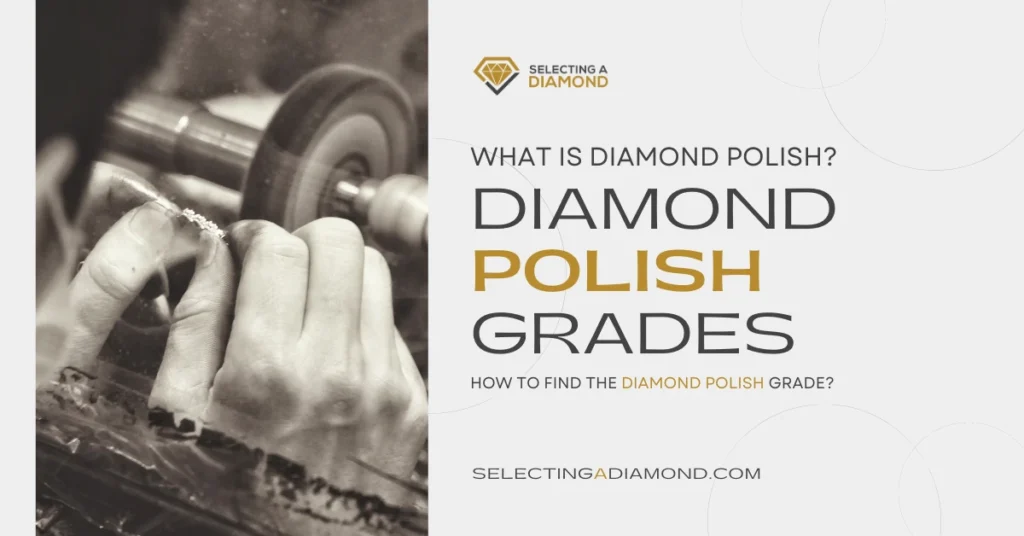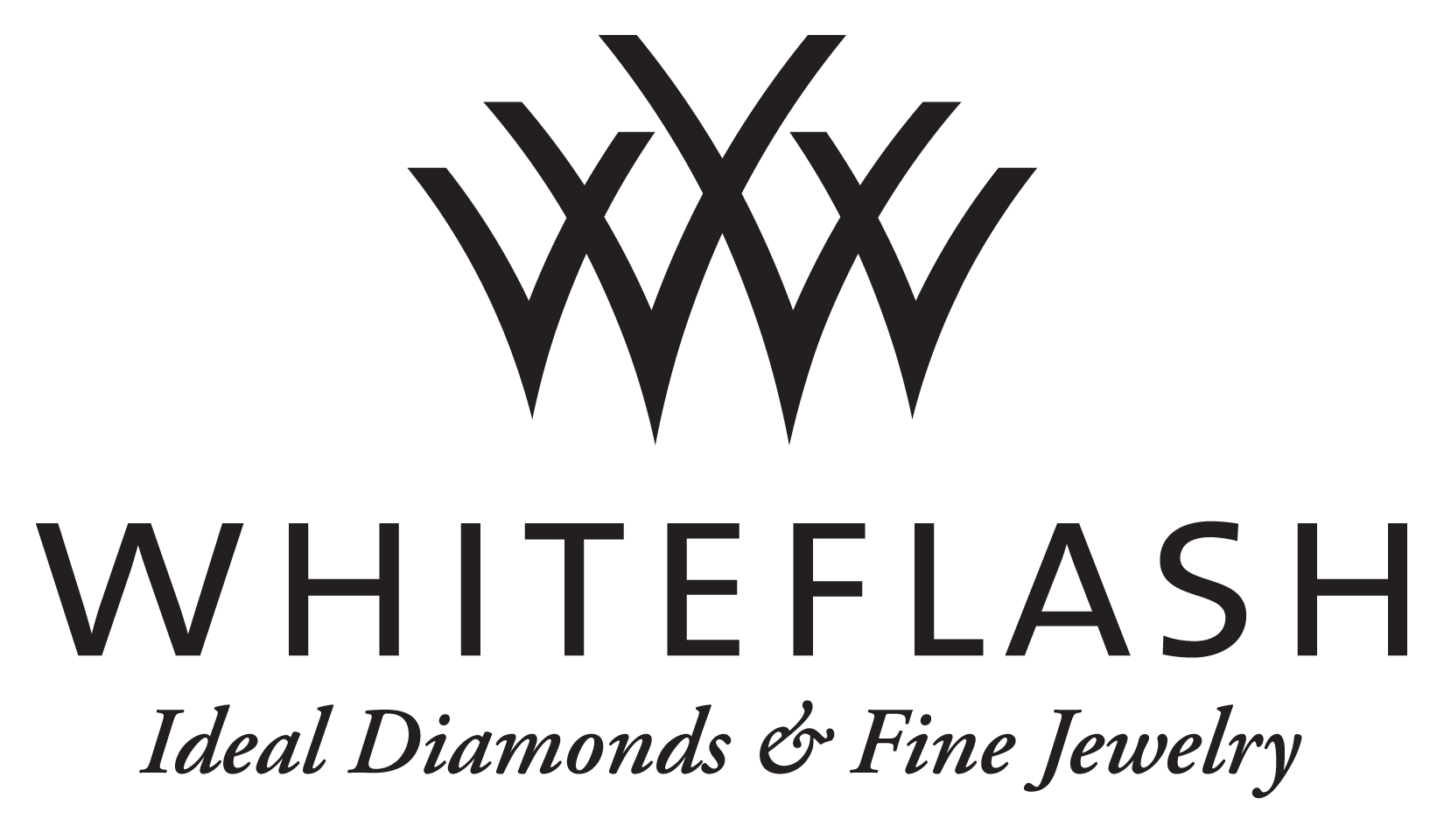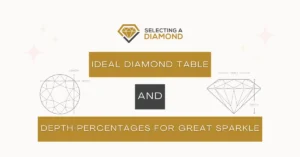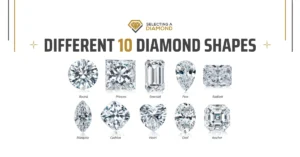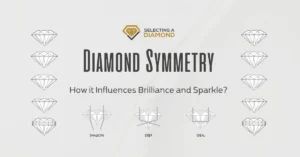When it’s about diamond brilliance, many factors come into play, and we know that it’s mainly the cut, but do you know that some other factors play a role in the cut grade itself?
If you do a search on James Allen for any carat, any color, any clarity, and ideal cut, then filter for diamonds with polish of grade Good, you will get ZERO diamonds, like in this search.
But if you go lower in cut (good & v.good), you will get diamonds with polish grade of Good! The same applies to Symmetry as well! Try it yourself and see how these two factors affect the diamond overall cut!
So what’s the deal here? What is diamond polish and how it correlates to diamond cut?
Let’s dive in…
What is Diamond Polish?
Diamond polish refers to the quality of a diamond’s surface condition as a result of the cutting and finishing processes.
The process happens by utilizing a diamond dust-coated polishing wheel, diamond cutters meticulously refine the stone. However, this process may leave minor lines or burn marks on the diamond’s surface, which can subtly affect its light reflection and overall look.
During polishing, minor surface defects may occur, including microscopic scratches, burn marks, or lines that can affect the diamond’s brilliance by interrupting light paths.
The quality of polish can range from “Excellent” to “Poor”, with higher polish grades contributing positively to the overall value and aesthetic appeal of the diamond, as recorded in the diamond’s certification.
Recognizing the significance of diamond polish to the stone’s beauty, grading organizations like GIA and AGS developed a standard for grading polish quality. This measure, documented on the diamond certificate, helps assess the overall quality and value of the diamond.
What are Diamond Polish Grades?
Different grading bodies (GIA, AGS, etc.) have created their own set of standards to define diamond polish grades, with GIA being the most reputable and standard across the industry, let’s take a look at how GIA defined diamond polish grades.
- Excellent: Negligible defects under 10x magnification. The diamond’s brilliance is untouched, displaying the highest level of craftsmanship.
- Very Good: Minor defects are detectable under magnification, but these have an insignificant impact on the diamond’s brilliance, making it an excellent value choice.
- Good: Multiple minor defects visible under magnification. These may affect the diamond’s brilliance slightly, but generally aren’t noticeable to the unaided eye, offering a good balance between cost and quality.
- Fair: Noticeable defects diminish the diamond’s sparkle and beauty under magnification. A “Fair” grade may be acceptable for smaller diamonds where defects are less visible.
- Poor: Large defects visibly degrade the diamond’s brilliance. This grade significantly detracts from the diamond’s beauty and is typically not recommended for purchase.
Remember that these grades are evaluated by trained professionals using specialized equipment, and minor defects are often not noticeable to the unaided eye.
Diamond Polish Grades at AGS
The American Gem Society (AGS) also provides a grading system for diamond polish. This system, however, differs from the GIA system in its scaling. Here are the grades in the AGS system:
- 0 (Ideal): Represents the top tier. There are no polish defects visible under 10x magnification.
- 1-3 (Excellent): Very minor polish defects may be visible under 10x magnification, but these do not affect the diamond’s overall brilliance or fire.
- 4-7 (Good to Fair): Visible polish defects under 10x magnification that can slightly diminish the diamond’s overall performance.
- 8-10 (Poor): Significant polish defects are visible under 10x magnification and significantly detract from the diamond’s performance.
How Does Diamond Polish Affect Brilliance?
Diamond polish plays a vital role in affecting a diamond’s brilliance, which refers to the reflection of white light, both on the surface and internally.
That’s why we saw above that you can NEVER find an ideal cut diamond that has a good polish grade.
In short:
When a diamond is well-polished, it allows light to effectively enter and refract within it, leading to maximum brilliance.
If a diamond is poorly polished, defects such as scratches, nicks, or lines can form on the surface.
These defects can interrupt the path of light as it enters or exits the diamond, diverting it from its optimal path and leading to a loss of reflected light.
What is the Recommended Polish Grade to Get?
Always stay away from anything less then a “V. Good” in GIA or AGS-2 grading and you will be fine.
Obviously the higher you go up in grading the higher the cost of the diamond. While there is no fixed amount of this increase but it can be substantial.
Neither Blue Nile nor James Allen sells diamonds with less than a “good” grade, so as long as you buy from them you are in good shape and can ignore this.
It’s worth to confirm that you will never be able to tell the difference between a Good, Very Good, or Excellent with your eye, and even using a loupe at 10X magnification you need to really know what you are looking for!
How to Find the Diamond Polish Grade?
Always look for a certificate, don’t buy a diamond (online, local, or even from a friend) without a real certificate.
GIA & AGS grading certificates will clearly show the diamond polish grade, make sure it says nothing less than Very Good (or 2 in AGS).
When you shoop online on reputable stores like Blue Nile, James Allen or the premium quality site Whiteflash, you will be able to find the polish grade listed publicly on the diamond page.
What are Diamond Polish Features?
No, not “features” in the common use of that word, these are the actual scratches/birthmarks/blemishes or whatever you want to call them.
Diamond polish features are microscopic characteristics present on a diamond’s surface after the polishing process. These may be the result of the diamond cutting and polishing process or natural features of the diamond itself.
Some common diamond polish features include:
- Polish Lines: These are fine, parallel lines left on the diamond’s surface by the polishing wheel. They are only visible under magnification.
- Surface Graining: This feature is associated with the crystal structure of the diamond. It can appear as faint lines, curves, or streaks on the diamond’s surface.
- Burn Marks: These are whitish, hazy areas caused by excessive heat during the polishing process. If not properly controlled, the heat can burn the diamond’s surface, resulting in these marks.
- Pits: Small, usually microscopic indentations on the diamond’s surface.
- Scratches: These are visible grooves or lines on the surface caused by contact with a harder object.
- Nicks: Small chips or notches on the diamond’s surface, usually around the girdle.
- Abrasions: These are small scratches or nicks along facet junctions, typically resulting from wear or damage after the cutting process.
It’s important to note that most polish features are microscopic and usually not visible to the naked eye. They are most often identifiable under 10x magnification during professional grading.
Still not sure where to buy your diamond?
We always recommend shopping diamonds online and created a Full guide to shop diamonds like a Pro.
Among online retailers, here are our favorite stores click their logo to visit store
-
James Allen:
Our favorite online store, best diamond imaging technology available today, comes with the largest collection with more than half a million loose diamonds.
-
Blue Nile:
Widest collection of loose diamonds of all sizes, great imaging technology for most of their inventory (hundreds of thousands of diamonds), great customer support.
-
Whiteflash:
Home Of A CUT ABOVE® Super Ideal Diamonds, they stand out from the crowd by offering premium diamonds cuts, tailored to those who love the details, at great prices too.

